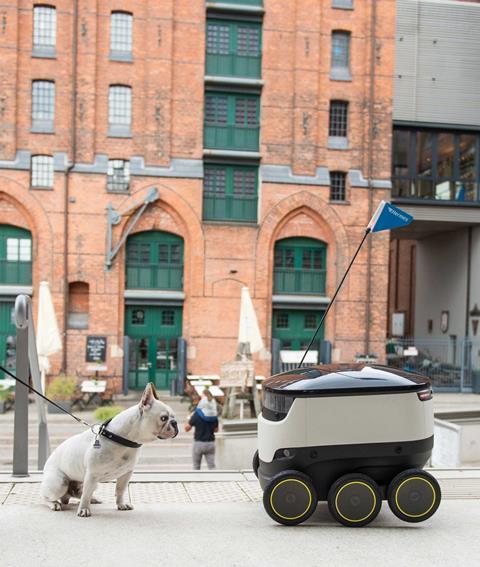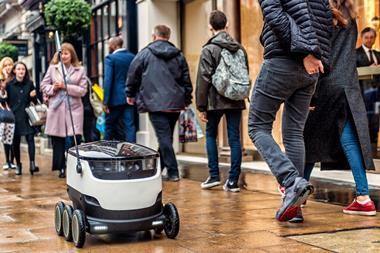Hermes’ David Turner explains how the company’s proposed self-driving delivery robots will work alongside its human couriers.
As someone that lives and breathes technology and innovation, I admit I was incredibly lucky to grow up during the 1980s, which remains one of the very best decades for the sheer number and variations of brilliant sci-fi films.
Whether it was pining over the Hoverboard from Back to the Future II, or dreaming of owning my very own Johnny 5 from Short Circuit, the 1980s really did provide a glimpse into the future.
While the 2015 universe Marty and Doc Brown travelled to in the Robert Zemeckis movie doesn’t quite resemble modern-day life – unless you somehow own a pizza hydrator – we are now starting to hear more about how robots will play a much larger part across several industries.
For example, I recently read an article about a robot bricklayer that can lay an astonishing 3,000 bricks a day in comparison with the builder’s average of 500.
“The self-driving delivery robots offer a viable alternative to drones, especially in highly developed cities, towns and suburbs, where strict aviation laws are in constant operation”
The Semi-Automated Mason – or SAM for short – has a mortar nozzle that pumps concrete on to the brick before its robotic arm places it on the wall.
It is the creation of New York-based Construction Robotics and has already replaced humans on a handful of sites across America, according to UK Construction Week.

Self-driving delivery robots
If you are a regular reader of national newspapers or the BBC news website, you may also have caught the news that Hermes will soon launch an innovative testing programme for the use of self-driving delivery robots in London.
In partnership with Starship Technologies, we will trial a number of parcel collections in the London borough of Southwark from next month.
Initially, we will offer limited 15-minute time slots for the collection of parcels, either for items being returned to retailers, or for items being sent by small businesses or consumers via myHermes.
We will use the testing period to better understand how the robots could enhance our ability to offer an increased range of on-demand solutions, as well as greater scheduling and tracking capabilities.
Each vehicle is 55cm high by 70cm long and incorporates a secured compartment where parcels with a maximum weight of 10kg can be transported, accessible to consumers via a link generated by a smartphone app.
The robots have six wheels and can travel at speeds up to 4mph – and they look great too!
We are a firm believer that the self-driving delivery robots offer a viable alternative to drones, especially in highly developed cities, towns and suburbs, where strict aviation laws are in constant operation.
However, unlike the report explaining that construction workers could lose their jobs to the robot brickie, we only see Starship’s robots supplementing and complementing the commendable work delivered each day by our network of self-employed couriers.
While robot delivery could prove successful for certain customers in certain areas in the near future, we also take great pride in the fact that our human couriers provide that friendly interaction and customer service that our mechanical friends cannot compete with!































No comments yet